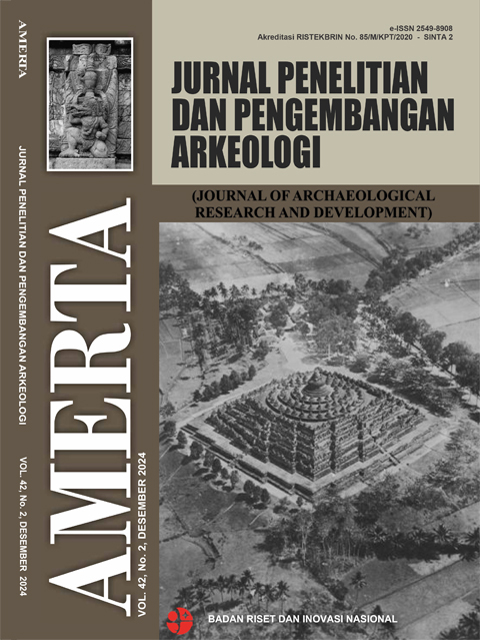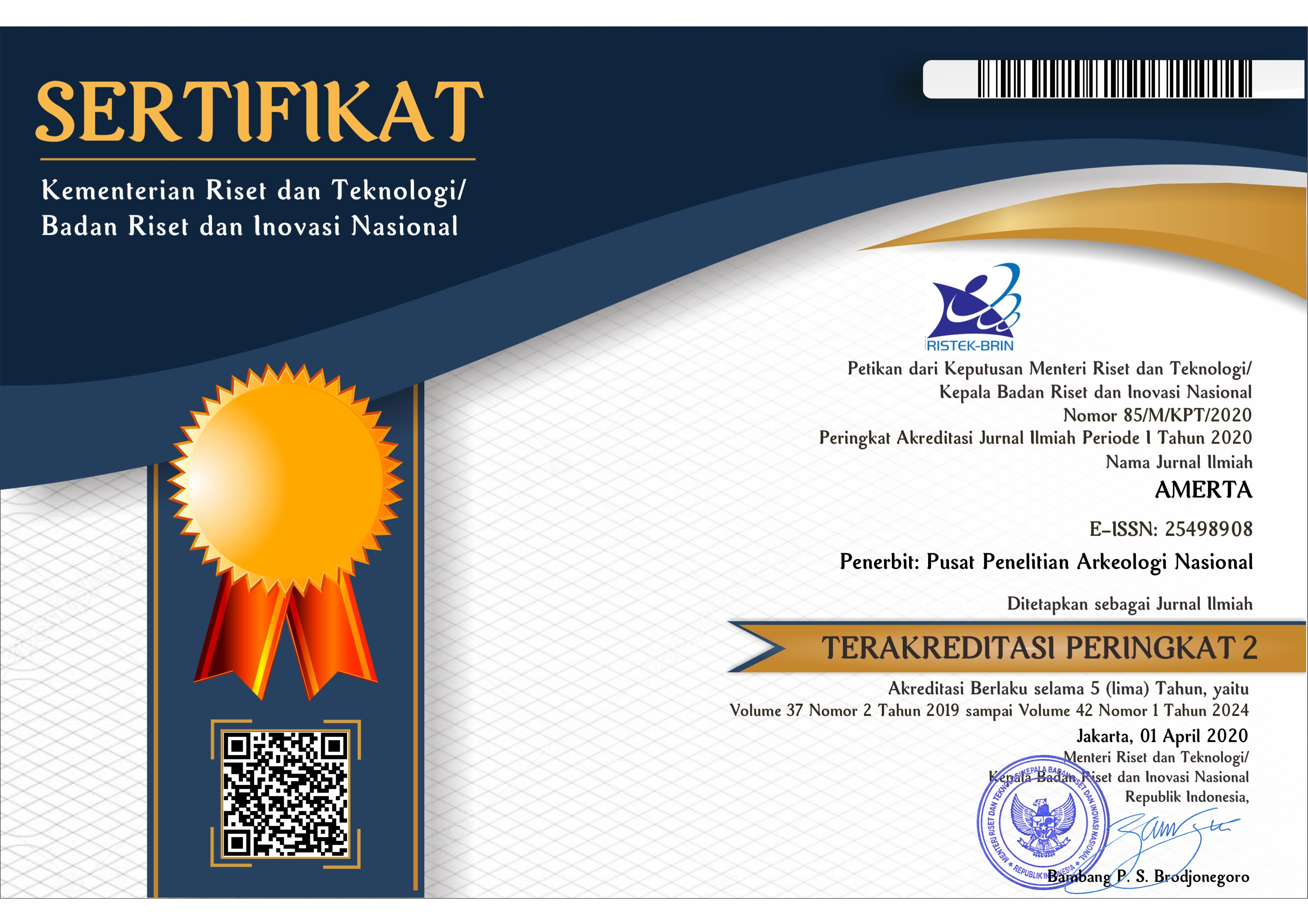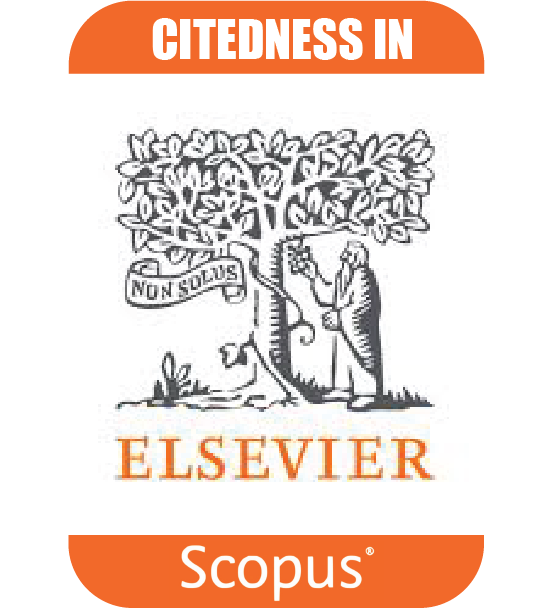Application of Geoelectric Method to Determine the Distribution of Liyangan Temple in Central Java
DOI:
https://doi.org/10.55981/amt.2024.4932Keywords:
Liyangan Temple, Resistivity, Geoelectric, Dipole-Dipole, Candi Liyangan, Resistivitas, GeolistrikAbstract
Abstract, Application of Geoelectric Method to Determine the Distribution of Liyangan Temple in Central Java. The Liyangan Site was buried on the slopes of Mount Sindoro in a fairly complete condition, with the Liyangan Temple and a residential complex. Knowing the existence of the temple and residential complex is very important in helping to reveal the history of the complex. The geoelectric method aimed to obtain the distribution towards the lateral and depth of the temple. This method provides an overview of the distribution of the Liyangan Temple and settlement based on differences in the resistivity properties of igneous rocks (as temple materials) and the surrounding rocks (alluvial or pyroclastic rocks from the eruption of Mount Sindoro). There are nine geoelectric lines in dipole-dipole confguration, consists of fve parallel and four perpendicular lines, with a spacing of 10 meters and n = 1-8. Res2DInv was used to process the geoelectric data. The results show that the resistivity values below the surface are classifed into four criteria, which are low resistivity with a value of <100 Ω.m is interpreted as soil, medium (100-490 Ω.m) as pyroclastic breccia lithology, high (490-2100 Ω.m) as volcanic breccia lithology, and high resistivity value of 2100 Ω.m is interpreted as andesite lava at a depth of 20-40 meters below the surface. The results also show that six lines have very high resistivity value anomalies (>2100 Ω.m) and are located on the surface to a depth of 4 meters, which are interpreted to be the remains of the foundation of the Liyangan Temple.
Keywords: Liyangan Temple, Resistivity, Geoelectric, Dipole-Dipole
Abstrak. Situs Liyangan yang terkubur di lereng Gunung Sindoro ditemukan dalam kondisi yang cukup lengkap, yaitu terdapat Candi Liyangan dan kompleks pemukiman. Mengetahui keberadaan candi dan kompleks permukiman menjadi permasalahan yang sangat penting dalam membantu upaya mengungkap sejarah kompleks tersebut. Upaya untuk memperoleh distribusi ke arah lateral maupun kedalaman candi dilakukan dengan metode geolistrik. Metode ini memberi gambaran persebaran Candi Liyangan dan pemukiman, berdasarkan perbedaan sifat resistivitas batuan beku (sebagai bahan candi) dan batuan sekelilingnya (aluvial atau batuan piroklastik produk letusan Gunung Sindoro). Sebanyak sembilan lintasan geolistrik konfigurasi dipole-dipole diambil untuk bisa memetakan kondisi bawah permukaan. Lima lintasan sejajar dan empat lintasan yang tegak lurus, dengan spasi 10 meter dan n=1-8. Res2DInv digunakan untuk mengolah data geolistrik. Hasil penelitian menunjukkan nilai resistivitas di bawah permukaan digolongkan menjadi resistivitas rendah dengan nilai <100 Ω.m diinterpretasikan sebagai soil, medium (100-490 Ω.m) sebagai litologi breksi piroklastik, tinggi (490- 2100 Ω.m) sebagai litologi breksi vulkanik, dan sangat tinggi dengan nilai 2100 Ω.m diduga sebagai lava andesit pada kedalaman 20-40 meter di bawah permukaan. Hasil penelitian juga menunjukkan bahwa enam lintasan memiliki anomali nilai resistivitas yang sangat tinggi (>2100 Ω.m) dan terletak di permukaan tanah sampai kedalaman 4 meter yang diduga merupakan sisa bagian dari pondasi Candi Liyangan.
Kata kunci: Candi Liyangan, Resistivitas, Geolistrik, Dipole-Dipole
Downloads
Published
How to Cite
Issue
Section
License
Copyright (c) 2024 Bonang Surya Utama, Y Yatini, Wrego Seno Giamboro, Hafiz Hamdallah

This work is licensed under a Creative Commons Attribution-ShareAlike 4.0 International License.








